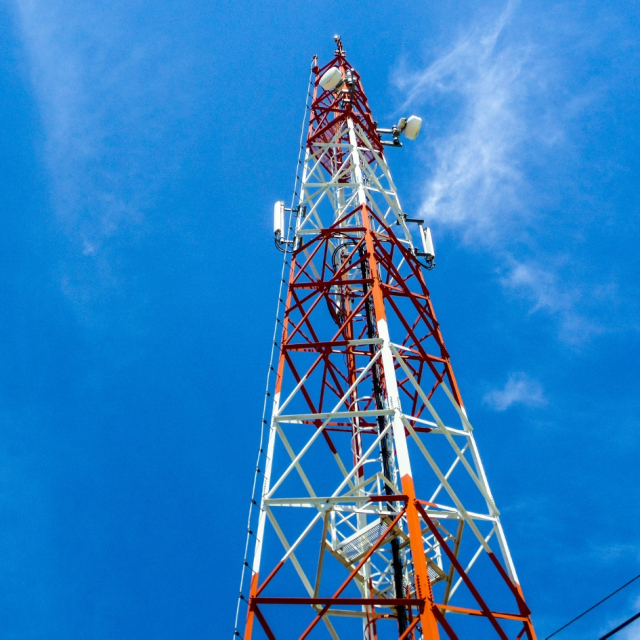Antennas are essential components in wireless communication systems. From radio to cellular networks and Wi-Fi, they are critical for transmitting and receiving signals that connect people, devices and services. Despite being invisible to most users, antennas are key components in our hyper-connected society. This article explores how they work, their types, applications and technological advancements.
Basic principle of antenna operation.
Antennas act as transducers, devices that convert energy from one type to another. In this case, they convert electrical signals into electromagnetic waves for transmission and vice versa for reception. This process is based on Maxwell's laws of electromagnetism, which explain how electric and magnetic fields interact to form waves that propagate through space.
In transmission : The alternating electric current flowing through the antenna generates an oscillating electromagnetic field. This field propagates in space as an electromagnetic wave that carries information, such as voice, video or text data.
In reception : An antenna captures electromagnetic waves present in its environment. These waves induce an electric current in the antenna conductor, which is then amplified and processed to extract the original information.
Key features of antennas.
The design and functionality of antennas depend on several technical parameters:
Radiation pattern : Defines the direction in which the antenna radiates energy. Omnidirectional antennas distribute signals in all directions, while directional antennas concentrate the emission in a specific direction.
Gain : Represents the antenna's ability to amplify signals compared to an ideal antenna. Higher gain means a better ability to transmit or receive signals in a given direction.
Polarization : Refers to the orientation of the wave's electric field. It can be linear, circular or elliptical. Matching polarization between transmitting and receiving antennas is essential to minimize signal loss.
Types of antennas and their applications.
Antennas come in a variety of designs, each optimized for specific applications:
Dipole antennas : These are the most basic and common. They consist of two metal elements that emit or receive signals. They are used in FM radios and basic radio communication equipment.
Satellite dishes : These use a parabolic reflector to focus the waves on a single point. They are essential in satellite communication and satellite television.
Microstrip or patch antennas : Compact and lightweight, they are found in devices such as mobile phones and GPS.
Omnidirectional antennas : They emit signals in all directions, making them ideal for Wi-Fi networks and broadcast systems.
Directional antennas : Designed to transmit or receive signals in a single direction, they are used in long-distance telecommunications and microwave links.
Practical applications of antennas.
Mobile telephony.
Cell tower antennas enable wireless communication between mobile devices and telecommunications networks. They are designed to transmit high-frequency signals and receive data from devices within their coverage area.
Wi-Fi and wireless networks.
In routers, antennas provide wireless internet access for multiple devices. These are omnidirectional, allowing the distribution of signals to a wide surrounding area.
Television and radio.
Terrestrial antennas receive broadcast signals from radio and television stations, converting them into visual or audio information that can be enjoyed by users.
Satellite communications.
Satellite dishes, both on the ground and on satellites, are essential for transmitting data over long distances in space, facilitating services such as GPS, global internet and meteorology.
Challenges in the use of antennas.
Although antennas are vital, they face technological challenges:
Interference : Electromagnetic signals can overlap, creating interference that affects communication quality. This is common in densely populated urban areas.
Limited range : The distance an antenna can cover is restricted by its design, transmit power, and environmental conditions.
Energy efficiency : Traditional antennas can waste energy by emitting signals in unwanted directions. This has led to the development of more advanced technologies, such as beamforming antennas.
Advances in antenna technology.
Smart antennas.
These antennas use algorithms to focus signals in specific directions, which improves communication quality and reduces interference. They are key in the deployment of 5G networks, where it is essential to optimize the use of the available spectrum.
Metamaterials.
Metamaterials are artificial materials that manipulate electromagnetic waves in ways that conventional antennas cannot achieve. This allows for the creation of smaller, more efficient antennas with expanded capabilities.
Antennas for the Internet of Things (IoT).
With the growth of IoT, compact and low-power antennas are required to connect small devices. These antennas are essential in applications such as home automation, healthcare and transportation.
Antennas are fundamental components in modern technological infrastructure. From mobile data transmission to satellite communications, they enable electromagnetic waves to carry information over vast distances. Although they face challenges such as interference and range limitations, technological advances continue to drive their development. With innovations such as smart antennas and metamaterials, their role in our daily lives will become even more significant in the future.
